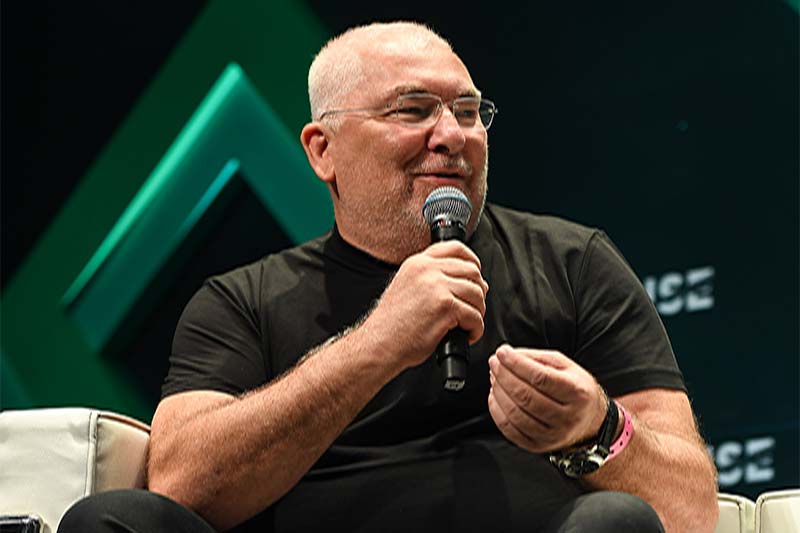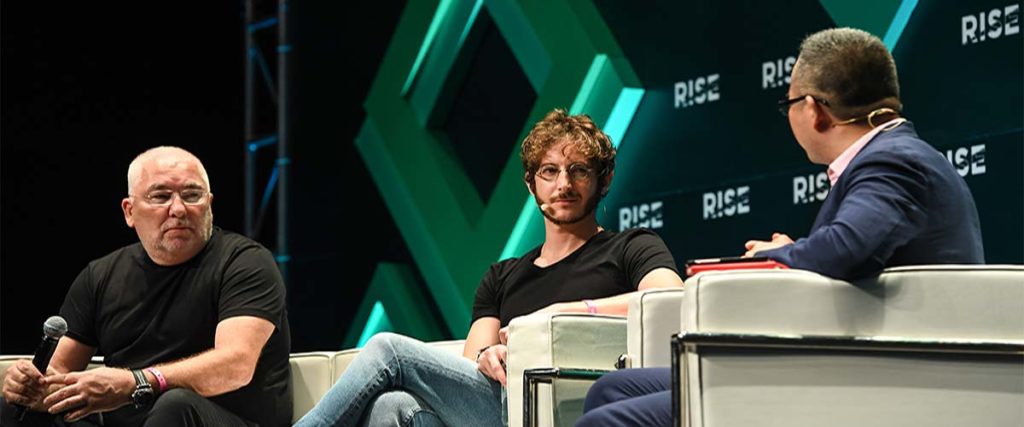Legendary architect Tim Kobe was the man who came up with Apple Retail. Now, he works closely with firms in Asia on their branding and retail offerings. At RISE, he spoke on the future of design as he sees it.
If you were lucky enough to walk into Apple’s first retail store in 2001 and thought “wow,” it’s all thanks to architect and visionary Tim Kobe and his team, a man often referred to as “Apple’s best-kept secret.” The designer kickstarted his journey back in 1989 when he first launched Eight Inc. in San Francisco, a design firm that delivered products, spaces and experiences in a whole new way. One year post-launch, the firm was hired by Steve Jobs of Apple to design the first-ever Apple store – and the rest is history, with clients such as Virgin Atlantic, Xiaomi, Citibank and Nike who followed. Largely credited with creating an entirely new landscape in retail design and the shopping experience, Tim spoke at RISE on the roles that innovation and technology play in creating a holistic branding experience.

Photo credit: Harry Murphy/RISE via Sportsfile
Tim Kobe began by explaining to the audience that, after being hired by Apple in 1997, Eight Inc. got its breakthrough and the word spread like fire. “When Steve Jobs hired us, I wrote on a white paper why Apple should go retail. We were then hired to start the retail program. The night before we launched the very first Apple store, Steve asked us, ‘What if nobody comes today,’ which was the risk that was on his mind as he didn’t want to fail.” With its groundbreaking, ‘second generation’ store design, the first Apple store did anything but, heralding a new age in retail that has changed the shopping landscape forever.
You might also like China Internet Report: How Chinese Firms are Rewriting Globalisation
Nowadays, Eight Inc. works extensively with companies in Asia. “China has made some extraordinary leaps in terms of development. If you look at the West, we come primarily from a hardwired connected kind of world. China is really a first-world today,” he told the crowd. Whether it’s product design or store design, the progress Tim Kobe has seen has been intriguing. “I was at an Alibaba conference and what was really interesting is the degree to which they’re pushing design throughout their organisation. It’s something that permeates the entire business structure and they spend an enormous amount of time and money encouraging everyone to get stronger and better at design. We’ve worked with Xiaomi as well and the way people interact with the brand is moving beyond.” From omnichannel in the past to multichannel retail today, the distance between product and stores is shrinking.
Take his work with Xiaomi. Today, the world’s fourth most valuable technology start-up is valued at more than USD 46 billion, having started life selling online before switching to offline, forced by direct competitors who were busy setting up retail stores in the market that were crumbling their market share. Tim explained that the segue in channels was a crucial shift in the company’s business model. “We had to understand the way Xiaomi has had unique opportunities to engage with people because most people can purchase their products through their apps. Xiaomi uses its online market segment as a focus group for feedback before launching their products.” When comparing the major differences between the East and West, or in simpler words, Apple and Xiaomi, Tim announced that the major difference is to be found in positioning. Whilst Apple positions itself as a pinnacle brand, Xiaomi believes in delivering the highest quality products at the lowest possible cost.
As of today, Tim explains that in order for a company to be successful, they have to share similar values with the people they want to work with as well as the people that engage in their businesses. For both, however, branding has been key – though not everything, Tim was keen to stress. “Your logo needs to reflect the values that ladder back to the company and should be sophisticated enough to compete in the market. However, your logo is not the only aspect of your brand that you should be considering,” says Tim who continues, “I think a big part of the design is recognising it’s a continuous learning process.” The quintessential retail experience that shoppers are trying to achieve has undoubtedly changed over the years with 2017 and 2018 portraying a more personal retail experience for shoppers and 2019 being more digital-savvy. Today, shoppers are out there pining for an entertaining and engaging retail experience, one that’s quick and easy with the choice of making a purchase by phone, through an app, online or in-store.
Photo credit (Banner): Harry Murphy/RISE via Sportsfile
Related Articles
7 Tips For Business Success in Asia
Payment Giant Stripe Talks About Future of the Internet Economy





